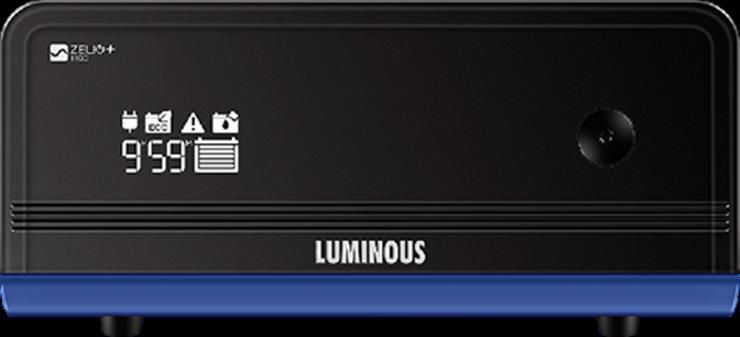Many places in the country are not well equipped with proper transmission lines for electricity. As a result, even with the slightest of problems, the electric supply in those places gets disrupted. On adverse weather conditions, such as thunderstorms or heavy rainfall, electric poles get uprooted as well. Hence, the frequency and duration of power cuts are very high in many places of the country. In order to combat extensive heat and humid weather conditions, having a backup power source is very important. Hence, people try to buy the best inverter for home that will help them in the power cut sessions.
However, when buying an inverter, many people are pre-equipped with wrong knowledge and false information. Some of these can even be discouraging to buy an inverter at all. These ‘myths’ needs to cleared so that people can know the right information and do not worry unnecessarily.

Image Source: Luminous
Top Myths about Inverters
Given below are some of the most popular myths that people have towards any best inverter for home. Most of these myths are baseless and needs to be cleared.
- Inverters can get damaged when not used
A very popular myth among people regarding any best inverter for home is that the inverter can get damaged if its usage is less. This is a baseless assumption as the inverter batteries are designed to get charged and discharged continuously. It does not matter if there have been 10 instances of power cut in a day, or 1 power cut in a month. Regardless of the situation, the inverter will still be functional. Most inverters have a long power retain capacity, and they go to trickle charging for 6 months without any problem. As a result, even if there have been no power cuts for a month or two, it will still provide full backup when the power cut occurs.
- Inverters consume heavy electricity
Another baseless myth that is associated with any best inverter for home is that the inverters take up a lot of electricity, which skyrockets the electric bill. People should know that most of the inverters nowadays come with UPS technology. These batteries are so designed that they take low power to get fully charged, and can retain the charge capacity. Also, once an inverter battery is fully charged, it uses a minimum amount of electricity. Moreover, when the power cut occurs, the same power stored in the battery gets distributed as electricity. These inverters can provide backup power while using less electricity. Therefore, you need not worry about the electric bill getting higher.
- Any water can be used for topping up the inverter battery
Most of the inverters nowadays use tall and tubular battery type, along with gel-based and flat plate batteries as well. However, among these best inverter for home, most products require very low maintenance. This includes topping up the battery with water when the indicator states a low water level. However, only distilled water can be used for topping up these batteries. Using normal water can significantly damage the batteries and reduce their lifespan.
These are some of the top myths present about the best inverter for home. Apart from these, many people still fear that the batteries will burst, or they will get shocks, and so on. People should know that these inverters use proper safety measures and MCBs for protecting the users against shocks and short circuits. Also, rugged and compact battery designs make them highly durable. As a result, the chances of explosions or other mishaps are reduced significantly. The modern-day inverter batteries come with digital indicators that act as alarms for overload, low battery, low water level, short circuit conditions, and so on. With so many useful properties, it is a great advantage to have the best inverter for home to provide backup power in times of need.